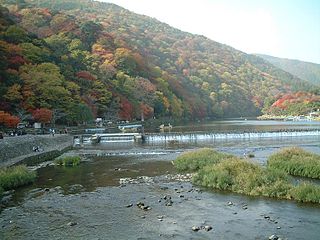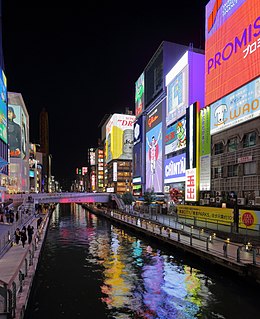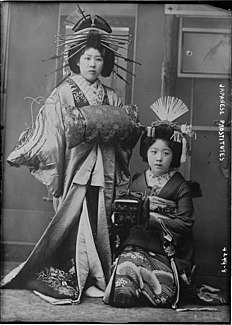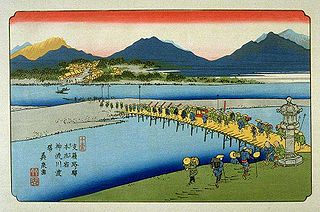Shinmachi (新町) was a yūkaku (遊廓、遊郭, pleasure quarter, courtesan's district) in Osaka, built between 1615 and 1623, and operating until its destruction in World War II. It was situated roughly two kilometers southwest of Nakanoshima. Today, it is mostly a tourist attraction and historical site.
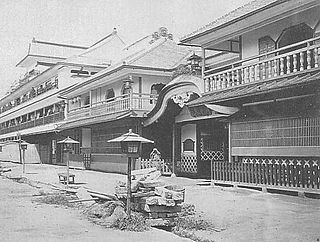
Yūkaku (遊廓) meant the regions in Japan where brothels recognized by the government were situated. In theory, prostitution was legal only in the Yūkaku region, but there were some places where prostitution was provided illegally.

Osaka is a designated city in the Kansai region of Japan. It is the capital city of Osaka Prefecture and the largest component of the Keihanshin Metropolitan Area, the second largest metropolitan area in Japan and among the largest in the world with over 19 million inhabitants. Osaka will host Expo 2025. The current mayor of Osaka is Hirohumi Yoshimura.

Nakanoshima (中之島) is a 3 km long and 50 hectares narrow sandbank in Kita-ku, Osaka city, Japan, that divides the Kyū-Yodo River into the Tosabori and Dōjima rivers. Many governmental and commercial offices, museums and other cultural facilities are located on Nakanoshima.
Throughout the Edo period (1603–1868), there was widespread male and female prostitution throughout the cities of Kyoto, Edo, and Osaka. The Tokugawa shogunate attempted to control this by restricting prostitution to designated city districts, known as yūkaku. These districts were Shimabara in Kyōto (est. 1640 [1] ), Shinmachi in Osaka (est. 1624–1644 [1] ) and Yoshiwara in Edo (est. 1617 [1] ). These restrictions and controls did not derive from a moral opposition to prostitution, but out of a desire to compartmentalize certain types of activity within the cities. Kabuki and jōruri theatres, and other related entertainment establishments were similarly controlled.
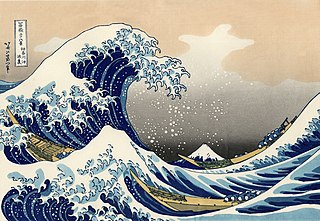
The Edo period or Tokugawa period (徳川時代) is the period between 1603 and 1868 in the history of Japan, when Japanese society was under the rule of the Tokugawa shogunate and the country's 300 regional daimyō. The period was characterized by economic growth, strict social order, isolationist foreign policies, a stable population, "no more wars", and popular enjoyment of arts and culture. The shogunate was officially established in Edo on March 24, 1603, by Tokugawa Ieyasu. The period came to an end with the Meiji Restoration on May 3, 1868, after the fall of Edo.

The Tokugawa Shogunate, also known as the Tokugawa Bakufu (徳川幕府) and the Edo Bakufu (江戸幕府), was the last feudal Japanese military government, which existed between 1603 and 1867. The head of government was the shōgun, and each was a member of the Tokugawa clan. The Tokugawa shogunate ruled from Edo Castle and the years of the shogunate became known as the Edo period. This time is also called the Tokugawa period or pre-modern.

Shimabara was the designated courtesans' district (yūkaku) in Kyoto, from 1640, and later also a geisha district (hanamachi). It is now defunct, both as a courtesans' district and as a geisha district, and thus is often excluded from the list of Kyoto hanamachi. It continues to operate as a tourist area, however, and does have one operating ochaya.


